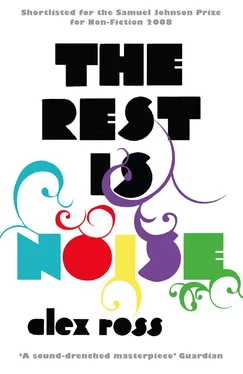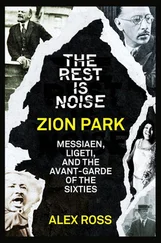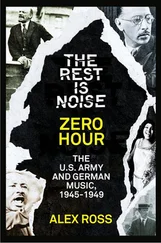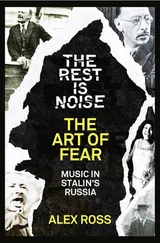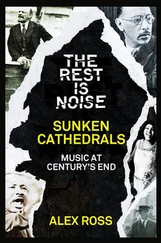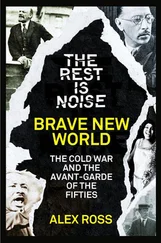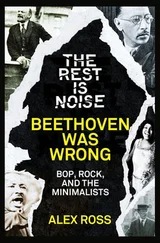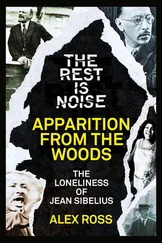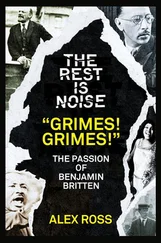The festivals of the twenties were the first great battleground of what the critic Bernard Holland has called the twentieth century’s “politics of style.” Composers weren’t simply engaging in artificial games; they were asking mighty questions about what art meant and how it related to society. Yet, as in the salons of Paris, this discussion about music and modernity took place within an unreal ecosystem that was removed from daily life. The audience at the new-music festivals was a motley gathering of elites—culture-building captains of industry, American heiresses looking to acquire European status, snob aesthetes with no pressing responsibilities, members of the new leisure classes. Ordinary people could not book a hotel for a week in Venice or Zurich. The audience at the average symphony-orchestra subscription concert was more socially diverse; those in the upper galleries made modest wages and came out of a simple love of music. But most preferred to hear Brahms.
“That is no country for old men,” William Butler Yeats cries in “Sailing to Byzantium.” The youngest composers, the children of 1900, adapted most easily to the racing tempos of the twenties; they had the metabolism to digest fresh paradigms overnight. The older ones faced an agonizing adjustment—and to be old in that youth-mad time was to be over the age of forty. Bartók probably spoke for many when he wrote in a letter of 1926, the year of Yeats’s poem: “To be frank, recently I have felt so stupid, so dazed, so empty-headed that I have truly doubted whether I am able to write anything new at all anymore. All the tangled chaos that the musical periodicals vomit thick and fast about the music of today has come to weigh heavily on me: the watchwords, linear, horizontal, vertical, objective, impersonal, polyphonic, homophonic, tonal, polytonal, atonal, and the rest …” Stravinsky let out a howl of disgust in a letter to Ansermet in 1922: “Here I am the head of modern music, as they say and so I believe, here I am forty years old—here I am being passed over in the grand prizes of the ‘great international congress’ in Salzburg … The committee reserved places of great importance on the program for Darius Milhaud, Ernest Blook [sic], Richard Strauss (probably Corngold [sic], Casella, Varese [sic], too)—all the musicians of ‘international’ stature … Oh, the cons.”
Ravel’s moment of crisis came when he played his new ballet score La Valse for Diaghilev in 1920. “Ravel, it’s a masterpiece, but it isn’t a ballet,” the impresario told him. “It’s a portrait of a ballet, a painting of a ballet.” Evidently, Diaghilev was saying that Ravel’s score lacked the pitiless spirit that the postwar era required.
The verdict was bizarre, for La Valse is both a dazzling incarnation of the twenties and a dazzling satire of it. It begins as a nostalgic journey in three-quarter time, Old Europe waltzing in the twilight. A stepwise intensification of dissonance and dynamics suggests the fury of the war just past, the wedding of aristocratic pride to the machinery of destruction. In the last moments, with trombones snarling and percussion rattling, the music becomes brassy, sassy, and fierce. Suddenly we seem to be in the middle of a flapper gin party—and there is no reason to feel any jolt of transition, since the Roaring Twenties were underwritten by the same fortunes that had financed the prewar balls. This is a society spinning out of control, reeling from the horrors of the recent past toward those of the near future.
Bartók’s confusion went deeper than matters of style: his personal history had been largely obliterated by the cartographic fiats of the peace treaties. The reduction of Hungarian territory after the collapse of the Austro-Hungarian Empire meant that Nagyszentmiklós, the composer’s birthplace, went to Romania, and that Pozsony, where his mother still lived, became Czechoslovak.
Nonetheless, Bartók remained loyal to the landscape of his dreams—that hidden empire of peasant music, which stretched as far as Turkey and North Africa. As Hungary moved toward fascism under the authoritarian government of Miklós Horthy, such multi-culturalism attracted suspicion; nationalists perceived Bartók as lacking in true Hungarian spirit. At the same time, his allegiance to folklore made him a quaint, anachronistic figure on the international new-music circuit. He was too cosmopolitan at home, too nationalist abroad. He was, however, finding the balance he had always sought, between the local and the universal. Less concerned with policing the boundaries between genres, he stopped agitating against the supposed contaminations of Gypsy music; Hungarian Gypsy fiddling appears all over his two Rhapsodies for violin and his Second Violin Concerto. Occasionally, he even indulged in a bit of jazz. As Julie Brown has pointed out, Bartók responded to the rise of genocidal racism by extolling “racial impurity”—the migration of styles, the intermingling of cultures.
In the first years of the postwar period Bartók strove to establish his modernist credentials. When the Danish composer Carl Nielsen came to Budapest in 1920, Bartók asked him whether he thought his Second Quartet was “sufficiently modern.” The ballet The Miraculous Mandarin, finished the previous year, matched the polytonal violence of the Rite, with a hint of Futurism in the honking cityscape of the prelude (“ ‘stylized’ noise,” Bartók called it). The strutting harshness of the two violin sonatas, the Piano Sonata, the piano suite Out of Doors, the First Piano Concerto, and the Third Quartet, all composed in the early and mid-twenties, won respect from the Schoenberg camp. But Bartók’s melodies retained a folkish shape, and the harmony again stopped short of full atonality. These works use symmetrical scales that revolve around a “tonal center,” a single pitch that sounds somehow “right” whenever it appears. In the wide-ranging Fourth Quartet, written in 1928, dissonant dances frame an ethereal slow movement that glides around the key of E major without quite touching it. In the final tranquillo section, the violin plays a sweet folkish melody, akin to the “Peacock Melody” of Magyar tradition. The composer has returned to first principles.
In several masterpieces of Bartók’s last years—the Music for Strings, Percussion, and Celesta (1936), the Second Violin Concerto (1937–38), and the Concerto for Orchestra (1943)—the ceremony of homecoming is repeated. The final movement of each work brings a palpable feeling of release, as if the composer, who had observed peasants with shy detachment, were finally throwing away his notebook and entering the fray. Strings whip up dust clouds around manic dancing feet. Brass play secular chorales, as if seated on the dented steps of a tilting little church. Winds squawk like excited children. Drums bang the drunken lust of young men at the center of the crowd. There are no sacrificial victims in these neoprimitive scenes, even if some walk away with bruises. The ritual of return is most poignant in the Concerto for Orchestra, which Bartók wrote in American exile. Transylvania was by then a purely mental space that he could dance across from end to end, even as his final illness immobilized him.
Bartók and Janáček met twice in the twenties. The second time, in 1927, Janáček is said to have grabbed Bartók by the shoulders and dragged him into a quiet corner. Posterity would love to have a precise record of that conversation, but the eyewitness report is frustratingly impressionistic: “fascinating exchange … a fireworks of personalities …” Did Janáček urge Bartók to be true to his national, folkish self, as Debussy had urged Stravinsky?
By now well into his seventies, the Moravian master was more bemused than intimidated by the culture of the festivals; he liked to tell the story that when he tried to find his way to the stage to take a bow at the ISCM festival of 1925, he opened the wrong door and found himself out on the street. The belated international success of Jenůfa gave him the confidence to stay on the path that he had marked out before the turn of the century.
Читать дальше
